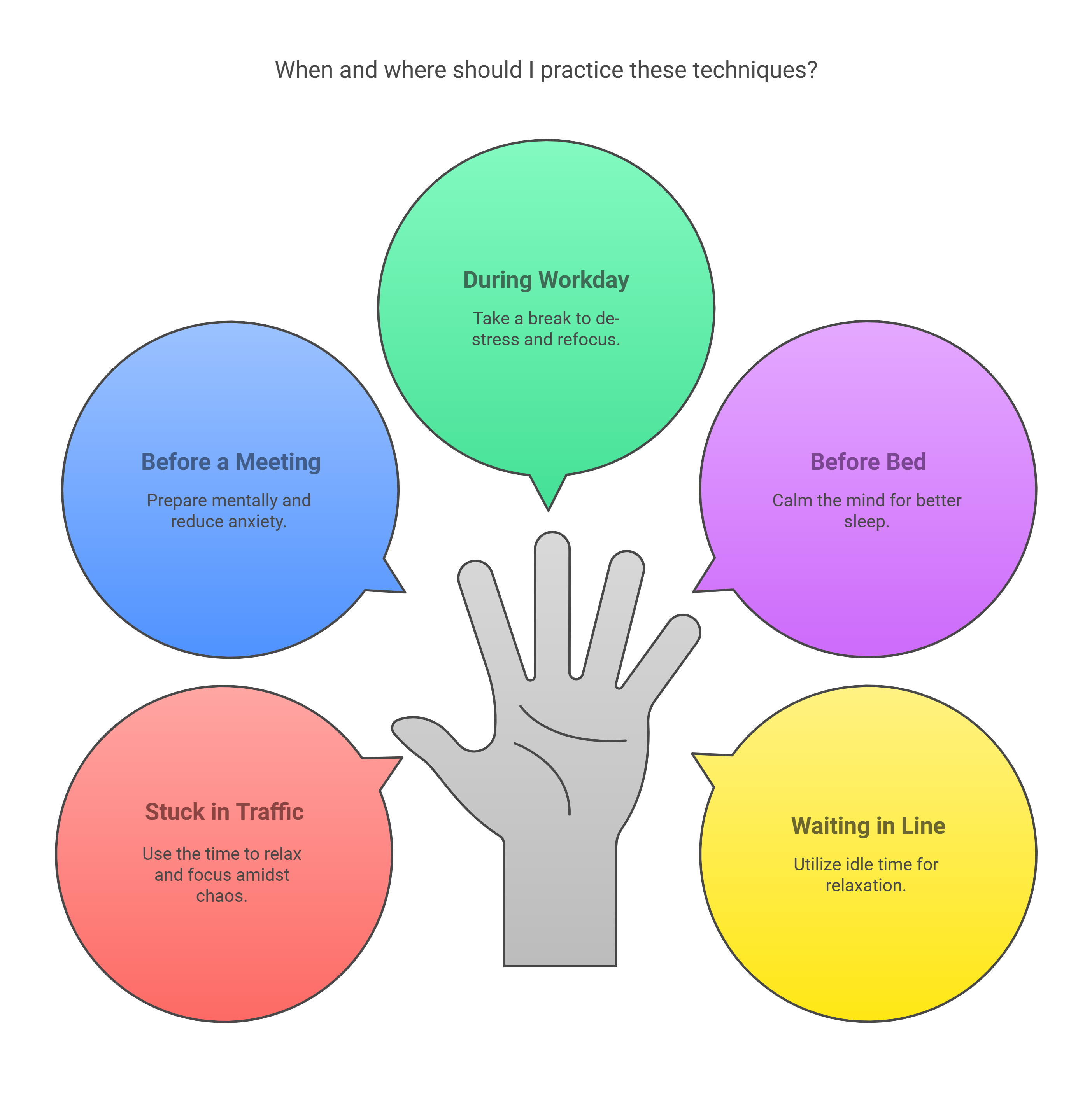
Breathe Away Stress: 5-Minute Techniques to Calm Your Chaotic Mind
Do you ever feel like life can feel like a never-ending roller coaster of stress, with anxiety lurking around every corner? What if I told you that the most powerful stress-relief tool is literally right under your nose? Spoiler alert: it's your breath.
Why Breathing Matters More Than You Think
Dr. Andrew Weil, a renowned integrative medicine specialist, emphasizes that "Breathing is the master key to our nervous system." Research from Harvard Medical School confirms that controlled breathing can significantly reduce stress, lower blood pressure, and even improve cognitive function.
A groundbreaking study published in the Frontiers in Psychology journal (2017) revealed that specific breathing techniques can activate the parasympathetic nervous system, essentially hitting the "calm down" button for your body's stress response.
The Science Behind Breathing and Stress Relief
When you're stressed, your body goes into fight-or-flight mode. Your breathing becomes shallow, heart rate increases, and cortisol levels spike. These breathing techniques are like a reset button for your entire nervous system.
1. Diaphragmatic Breathing: Your Stress-Busting Secret Weapon
Also known as "belly breathing," this technique is surprisingly simple:
Sit or lie comfortably
Place one hand on your chest, another on your belly
Breathe in slowly through your nose, feeling your belly expand
Exhale slowly through pursed lips
Repeat for 5-10 minutes
Dr. Amit Sood from Mayo Clinic notes that this technique can reduce stress by up to 50% when practiced regularly.
2. Box Breathing: Navy SEAL Stress Management Technique
Used by military personnel to maintain composure in high-stress situations:
Inhale for 4 counts
Hold breath for 4 counts
Exhale for 4 counts
Hold empty lungs for 4 counts
Repeat 4-5 times
Insight: It's like a meditation workout for your lungs – minus the fancy yoga pants!
3. 4-7-8 Breathing: The Natural Tranquilizer
Developed by Dr. Andrew Weil, this technique is like a mini-vacation for your nervous system:
Exhale completely through your mouth
Close your mouth, inhale through your nose for 4 counts
Hold breath for 7 counts
Exhale completely through your mouth for 8 counts
Repeat 4 times
When and Where to Practice
The beauty of these techniques? You can do them literally anywhere:
Stuck in traffic
Before a big meeting
During a stressful work day
Right before bed
While waiting in line
No equipment needed, just your magnificent lungs and a minute or two of your time.

Pro Tips for Breathing Success
Start small: Even 2-3 minutes makes a difference
Be consistent: Practice daily
Don't force it: If a technique feels uncomfortable, try another
Use a timer or breathing app if you need guidance
The Research Speaks Volumes
A study in the Journal of Clinical Psychology (2019) found that regular breathing exercises can:
Reduce anxiety by up to 40%
Improve sleep quality
Enhance emotional regulation
Boost overall mental health
A Word of Caution
While these techniques are generally safe, individuals with respiratory conditions or severe anxiety should consult their healthcare provider before starting any new breathing practice.
Final Thoughts
Stress doesn't have to be your default setting. With these simple breathing techniques, you're essentially carrying a portable stress-management toolkit. Remember, every breath is an opportunity to reset, recharge, and reclaim your calm.
Take a deep breath. You've got this.
 Add Row
Add Row  Add
Add 




Write A Comment